

Tom Watson was born 20 years after Arnold Palmer. He grew up watching Palmer win majors and hoped that one day he would be able to emulate the man Watson describes as his hero. Palmer collected seven major titles and ultimately Watson went one better, winning eight and becoming the greatest player of his own generation. One of golf’s most dedicated students, here Watson offers Kingdom his exclusive analysis on Palmer’s iconic golf swing.
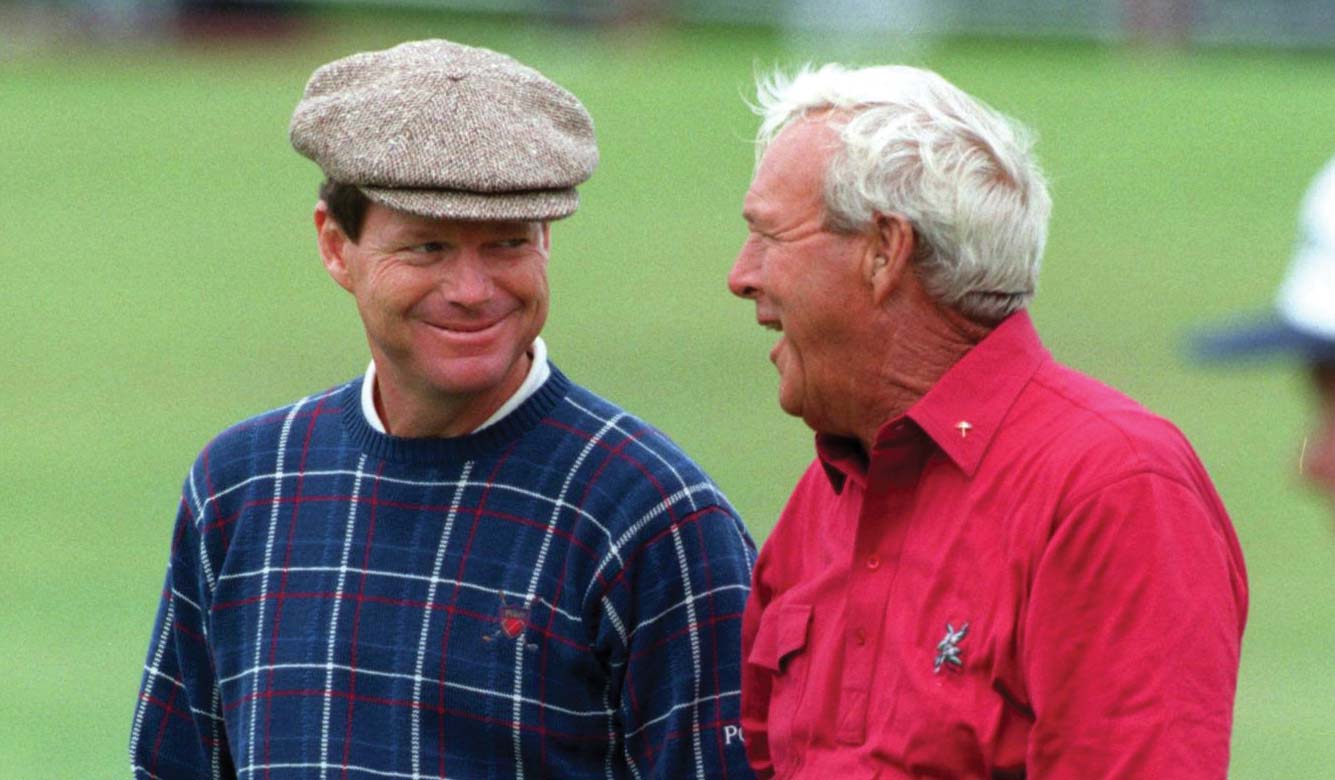
“I first played golf with Arnold Palmer in an exhibition in 1965 in Kansas City when I was 15 years old. To have the opportunity to see Arnold up close and personal back then was wonderful.
Arnold had a powerful, fast swing. I have a fast swing as well—neither of us had the rhythm of a golfer like Sam Snead. It was a fast, back-and-forth rhythm.
This photographic sequence from 1962, taken at an angle behind his left shoulder, offers a unique picture of Arnie’s swing, and it really shows the strength in his lower body and how it worked. He clears his left side violently to allow his arms to shoot straight out into impact. You don’t see this with golfers as much today. Today, golfers are taught to keep their arms closer to the body on the follow-through—almost as if they are cutting across the ball—and I don’t concur with it.
Arnold had a strong upper body but these pictures really show how his lower body moved very quickly. From there the coiled up power is unleashed with the arms and hands. If you can swing your arms fast you can hit the golf ball a long way, and Arnie could swing his arms fast.
When I first met Arnold back in 1965 he was already my hero. He remained my hero all the way through his life and he is still my hero today.”
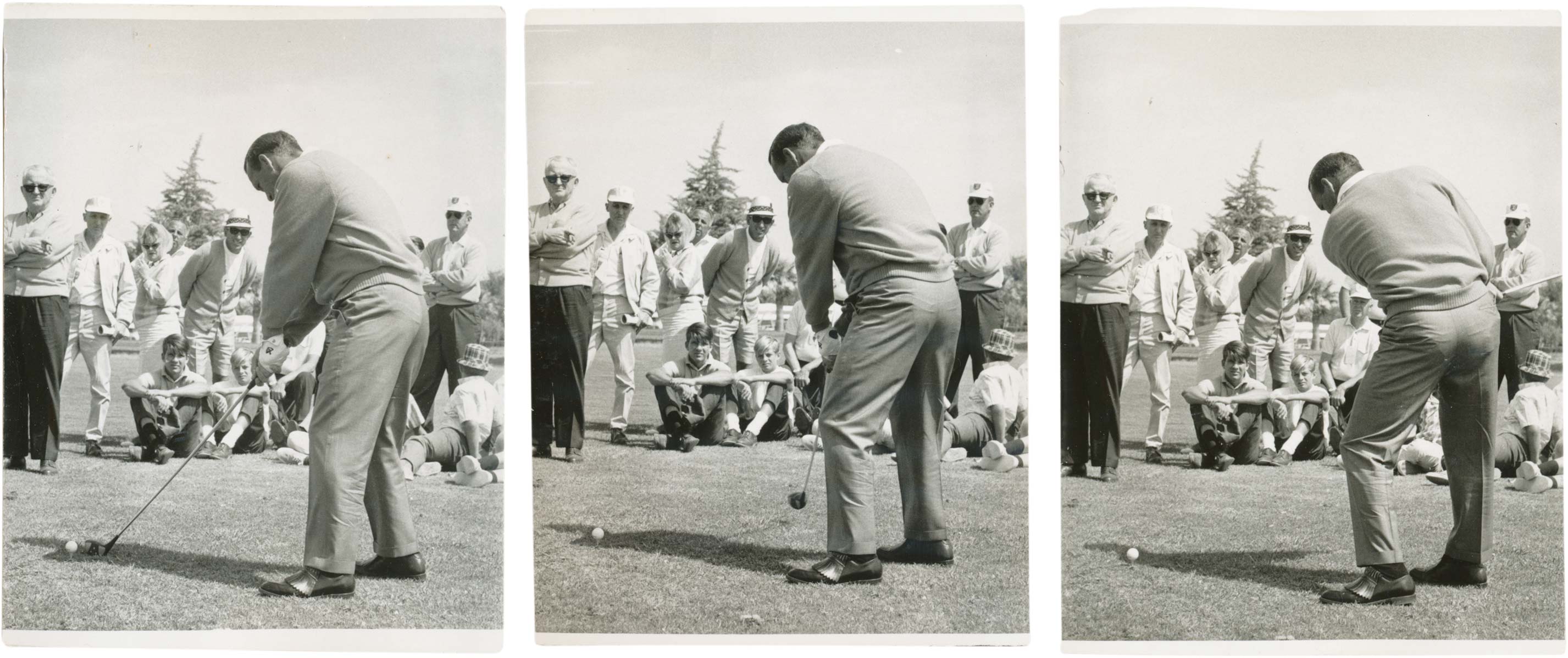
Look at Arnie’s head position through this whole sequence. You can see it dip a little in frame 3 but from that point Arnold kept his head “in the box” into impact and through. His head stays down. That was key to Arnold Palmer’s swing. If your head remains in the same position it makes it very possible to hit the ball very solidly in the middle of the clubface all the time.
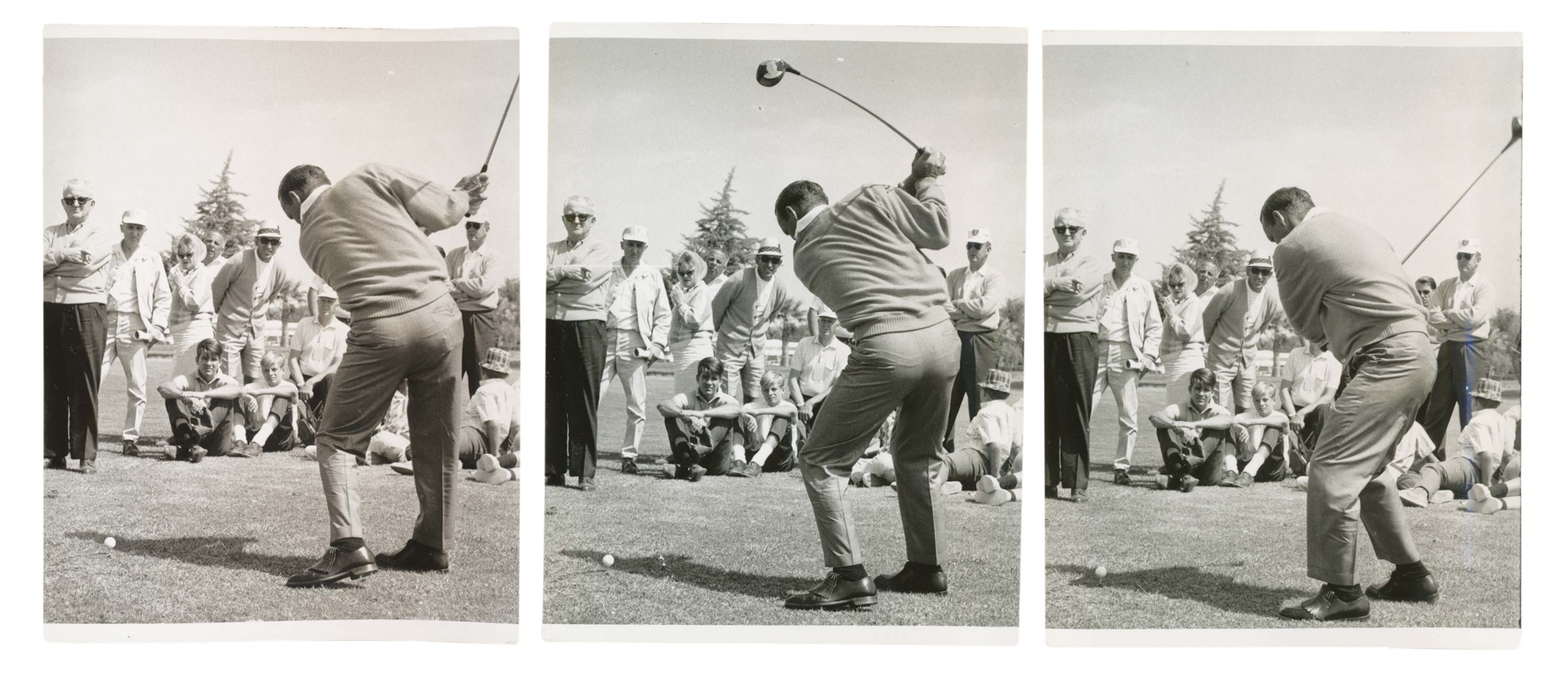
Arnie’s upper body is in a very taught, coiled position by frame 5. His lower body is about to counter-rotate and he is starting to make that very athletic move with his hips. The left hip starts to rotate while the upper body stays coiled just for a moment longer.
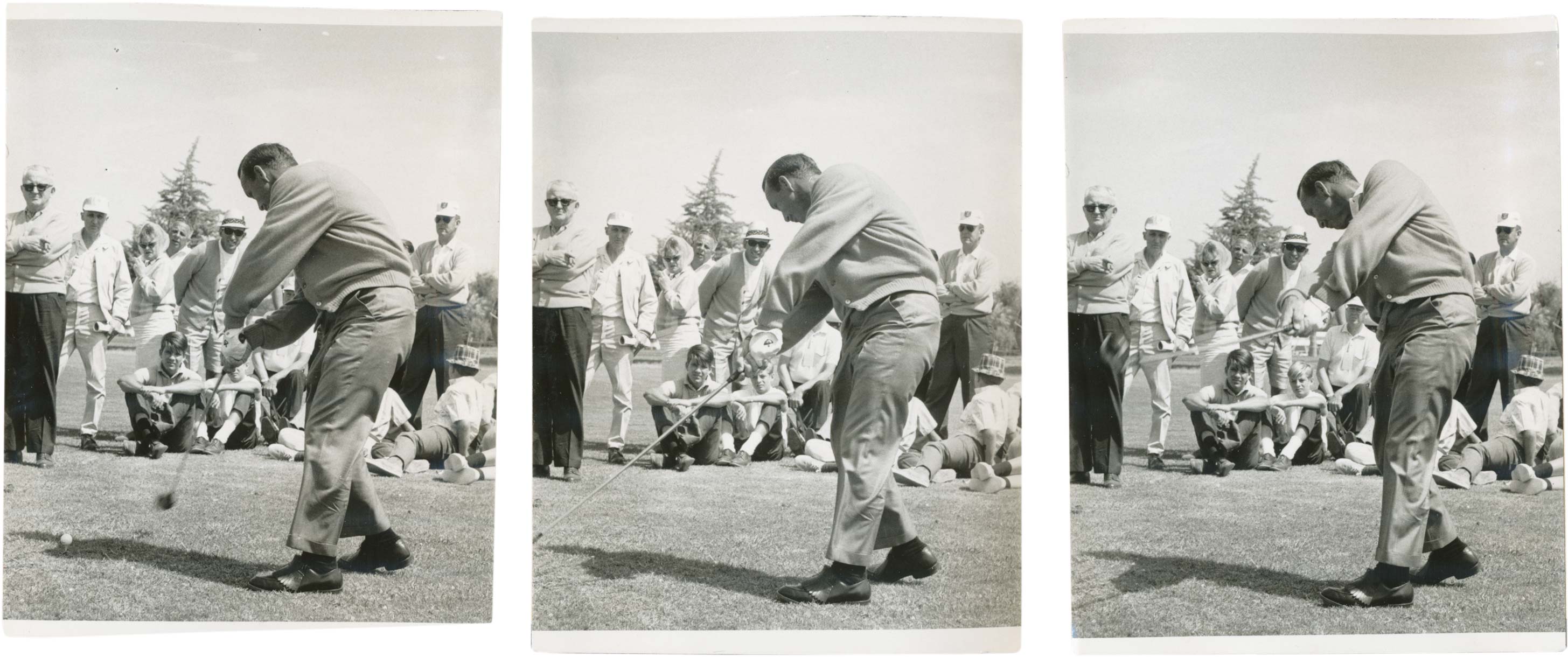
Arnie turns his hips so violently that the club comes down on line. That is the power move in golf, right there. Then the arms and hands unleash from that coiled position into impact.
Here you can see Arnie’s full extension through the ball. That is how I was taught and I still think it is the right way to swing. Right here Palmer is unleashing his full force into the back of the ball.
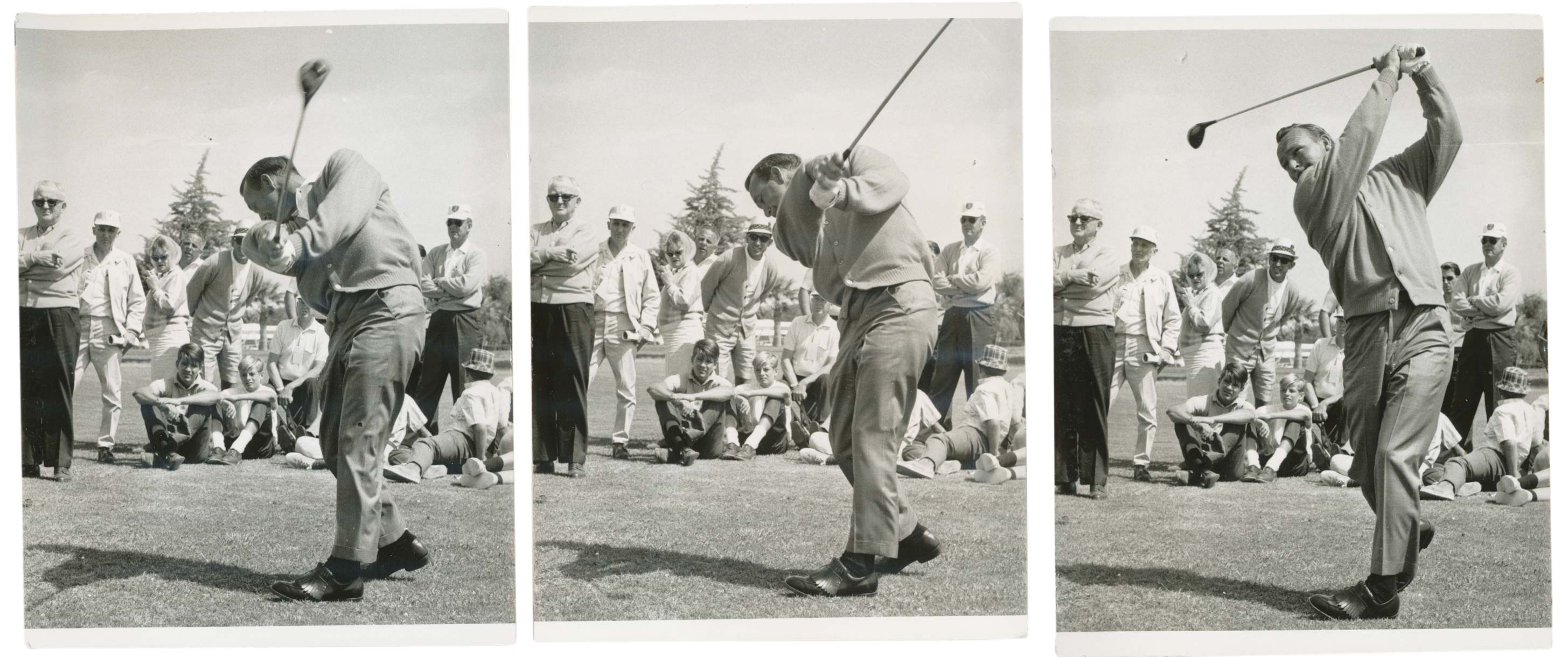
Arnold’s head is just beginning to come up in frame 11, at which point the club is past parallel in the follow through. That was Arnie’s signature right there. You don’t see it as much today as golfers tend to move their head up with the follow through in the modern swing.
Then frame 12 shows Arnie’s iconic finish. In fact, he had to finish with his hands high to prevent the hook.
Follow Us On


| Cookie | Duration | Description |
|---|---|---|
| cookielawinfo-checkbox-analytics | 11 months | This cookie is set by GDPR Cookie Consent plugin. The cookie is used to store the user consent for the cookies in the category "Analytics". |
| cookielawinfo-checkbox-functional | 11 months | The cookie is set by GDPR cookie consent to record the user consent for the cookies in the category "Functional". |
| cookielawinfo-checkbox-necessary | 11 months | This cookie is set by GDPR Cookie Consent plugin. The cookies is used to store the user consent for the cookies in the category "Necessary". |
| cookielawinfo-checkbox-others | 11 months | This cookie is set by GDPR Cookie Consent plugin. The cookie is used to store the user consent for the cookies in the category "Other. |
| cookielawinfo-checkbox-performance | 11 months | This cookie is set by GDPR Cookie Consent plugin. The cookie is used to store the user consent for the cookies in the category "Performance". |
| viewed_cookie_policy | 11 months | The cookie is set by the GDPR Cookie Consent plugin and is used to store whether or not user has consented to the use of cookies. It does not store any personal data. |